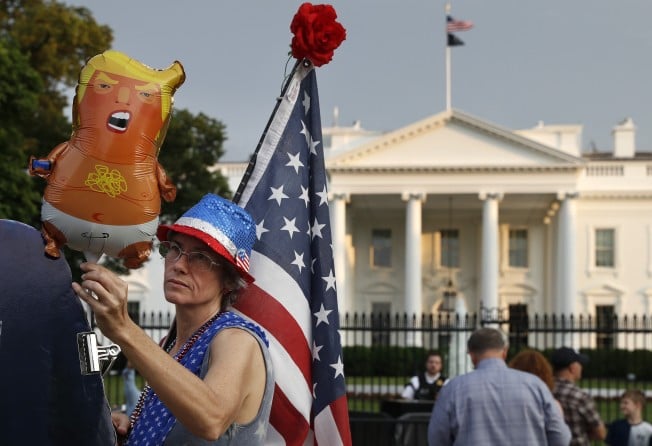As Donald Trump threatens Iran, where are the Hong-Kong-style mass protests in the US?
- Unlike Hongkongers who challenged their government with large-scale protests this month, the US has not seen major demonstrations over the American president’s threats of military action against North Korea and Iran

In late 2017, most of the North-Korea-watching community was worried. The US and North Korean leadership appeared locked in a high-stakes game of chicken, with neither willing to cede any ground over the North’s nuclear programme.
Rumours swirled that limited strikes were being considered, that Americans would soon be called to leave the Korean peninsula and that the US considered it preferable for Japan and/or South Korea to suffer massive casualties rather than let Pyongyang perfect its nuclear deterrent.
Thankfully, South Korea and the North broke the diplomatic ice soon after and a year of summits followed. The present impasse is no one’s ideal, but is preferable to loose talk of “total destruction” and “dotards” tamed with fire.
Many unaffiliated American voters had doubts about US President Donald Trump’s leadership at a time of calamity, but thought the generals around him would guide him appropriately.
However, one of those generals, then-national security adviser H.R. McMaster – perhaps remembered fondly in comparison to his mustachioed, “devil-incarnate” successor John Bolton – led the charge towards confrontation, saying the US had “run out of road” with North Korea and that he was committed to “a resolution”, but not necessarily a peaceful one.
Even more frustrating, Trump’s centre-left critics appeared more concerned about the impending demise of net neutrality, tax cuts that disproportionately benefited the wealthy and Trump’s numerous faux pas and personality tics.
There was no groundswell of demands that The New York Times and The Washington Post dedicate more coverage to fact-checking the administration’s claims about the North or describe war scenarios in detail.
Were there any large-scale protests in Washington against a potential strike that could spiral into conflagration? Dream on.

Now that dynamic is repeating itself with Iran. The Trump administration continues to ramp up the pressure on Tehran, considered by many in Washington to be the patient zero of the Middle East’s many ills.
US allies in the region aren’t ringing the alarm bells because many have their own stakes in seeing the influence of the region’s major Shia power diminish. Mojahedin-e-Khalq, an Iranian opposition group that was once on the US terrorism registry, lobbies a bipartisan coalition of former officials, Bolton included, to call for regime change.
Tehran’s own hardliners are ascendant as well, vindicated in their scepticism of the Joint Comprehensive Plan of Action that the moderate government of Hassan Rowhani signed with the previous US administration, and which Trump unilaterally abrogated last year.
Burned by US withdrawal, Rowhani has had no choice but to resist both Trump’s overtures and his threats in 2019.
And Trump, while he says he does not want a war with Iran, again appears content to engage in a high-stakes contest of wills with a country whose inner workings he does not understand. One miscalculation by either side could mean disaster.
To their credit, Americans reacted to recent claims, by Secretary of State Mike Pompeo and others, of an Iranian attack in the Sea of Oman with scepticism they did not show in 2002-03, when it was alleged that Iraq was stockpiling weapons of mass destruction.
But they need to ask what it would mean if Iran did commit the attack on the ships, as accused. What would be a proportionate response? Would the consequences of war with Iran be any less terrible? To what extent was this action provoked by this administration’s maximum pressure campaign?
Since June 9, the world has watched Hong Kong’s protest movement closely. The mood of Americans in my social circle turned from dread to relief and then to awe as Hongkongers took to the streets, making it difficult for a government they feel no longer represents them to function.
But Americans are hesitant to do the same. So what if their country sleepwalks into a wholly unnecessary conflagration?
They should crowd the streets of Washington until the administration lowers the temperature. Make Mike Pompeo and John Bolton’s commute to work inconvenient. Send a message to the world that Americans don’t want war. Until you do, Hongkongers are putting you to shame.
Rob York is a production editor at the Post and a PhD candidate in Korean history at the University of Hawaii